- Clone
- 8.1.1 (See other available formats)
- Regulatory Status
- RUO
- Other Names
- T1a, gp38, stromal cell marker
- Isotype
- Syrian Hamster IgG
- Ave. Rating
- Submit a Review
- Product Citations
- 40 publications

| Cat # | Size | Price | Quantity Check Availability | Save | ||
|---|---|---|---|---|---|---|
| 127407 | 50 µg | 134 CHF | ||||
| 127408 | 200 µg | 408 CHF | ||||
The mucin-type glycoprotein podoplanin is thought to be involved in the development of the lymphatic vascular system. Podoplanin is named after its expression in the kidney glomerular epithelial cells (podocytes). It has a potential role in tumor progression.
Product DetailsProduct Details
- Verified Reactivity
- Mouse
- Antibody Type
- Monoclonal
- Host Species
- Syrian Hamster
- Formulation
- Phosphate-buffered solution, pH 7.2, containing 0.09% sodium azide.
- Preparation
- The antibody was purified by affinity chromatography, and conjugated with PE under optimal conditions.
- Concentration
- 0.2 mg/ml
- Storage & Handling
- The antibody solution should be stored undiluted between 2°C and 8°C, and protected from prolonged exposure to light. Do not freeze.
- Application
-
FC - Quality tested
- Recommended Usage
-
Each lot of this antibody is quality control tested by immunofluorescent staining with flow cytometric analysis. For flow cytometric staining, the suggested use of this reagent is ≤ 0.25 µg per 106 cells in 100 µl volume or 100 µl of whole blood. It is recommended that the reagent be titrated for optimal performance for each application.
- Excitation Laser
-
Blue Laser (488 nm)
Green Laser (532 nm)/Yellow-Green Laser (561 nm)
- Application Notes
-
Additional reported applications (for the relevant formats) include: immunohistochemistry6, and spatial biology (IBEX)8,9.
-
Application References
(PubMed link indicates BioLegend citation) -
- Farr A, et al. 1992. J. Histochem. Cytochem. 40:651.
- Farr AG, et al. 1992. J. Exp. Med. 176:1477.
- Bekiaris V, et al. 2008. J. Immunol. 180:6768.
- Algars A, et al. 2011. Blood 117:4387. PubMed
- Reis VO, et al. 2012. Immunobiology. 217:831. PubMed
- Kaji C, et al. 2012. Acta. Histochem. Cytochem. 45:227. (IHC)
- Kretschmer S, et al. 2013. PLoS One. 8:e52201. PubMed.
- Radtke AJ, et al. 2020. Proc Natl Acad Sci U S A. 117:33455-65. (SB) PubMed
- Radtke AJ, et al. 2022. Nat Protoc. 17:378-401. (SB) PubMed
- Product Citations
-
- RRID
-
AB_2161928 (BioLegend Cat. No. 127407)
AB_2161928 (BioLegend Cat. No. 127408)
Antigen Details
- Structure
- 43 Kd glycosylated type-1 transmembrane protein. Mucin-type protein.
- Distribution
-
Expressed on epithelial and mesothelial cells.
- Cell Type
- Epithelial cells
- Biology Area
- Cell Biology, Immunology, Neuroscience, Neuroscience Cell Markers
- Antigen References
-
1. Farr A, et al. 1992. J. Histochem. Cytochem. 40:651.
2. Schacht V, et al. 2005. Am. J. Pathol. 166:913. - Gene ID
- 14726 View all products for this Gene ID
- UniProt
- View information about Podoplanin on UniProt.org
Related FAQs
- What type of PE do you use in your conjugates?
- We use R-PE in our conjugates.
Other Formats
View All Podoplanin Reagents Request Custom Conjugation| Description | Clone | Applications |
|---|---|---|
| Biotin anti-mouse Podoplanin | 8.1.1 | FC |
| Purified anti-mouse Podoplanin | 8.1.1 | FC,IHC-F,SB |
| Alexa Fluor® 488 anti-mouse Podoplanin | 8.1.1 | FC |
| PE anti-mouse Podoplanin | 8.1.1 | FC |
| APC anti-mouse Podoplanin | 8.1.1 | FC |
| PE/Cyanine7 anti-mouse Podoplanin | 8.1.1 | FC |
| Alexa Fluor® 594 anti-mouse Podoplanin | 8.1.1 | ICC,IHC-F |
| FITC anti-mouse Podoplanin | 8.1.1 | FC |
| APC/Cyanine7 anti-mouse Podoplanin | 8.1.1 | FC |
| PE/Dazzle™ 594 anti-mouse Podoplanin | 8.1.1 | FC |
| PerCP/Cyanine5.5 anti-mouse Podoplanin | 8.1.1 | FC |
| Brilliant Violet 421™ anti-mouse Podoplanin | 8.1.1 | FC |
| TotalSeq™-A1035 anti-mouse Podoplanin | 8.1.1 | PG |
| APC/Fire™ 750 anti-mouse Podoplanin | 8.1.1 | FC |
| TotalSeq™-C1035 anti-mouse Podoplanin | 8.1.1 | PG |
| TotalSeq™-B1035 anti-mouse Podoplanin | 8.1.1 | PG |
Customers Also Purchased
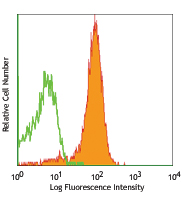

Compare Data Across All Formats
This data display is provided for general comparisons between formats.
Your actual data may vary due to variations in samples, target cells, instruments and their settings, staining conditions, and other factors.
If you need assistance with selecting the best format contact our expert technical support team.
-
Biotin anti-mouse Podoplanin
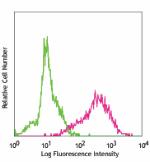
Mouse thymic epithelial stromal cell line TE-71 stained with... -
Purified anti-mouse Podoplanin
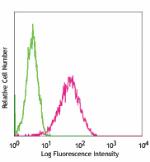
TE-71 cells stained with purified 8.1.1, followed by anti-Sy... 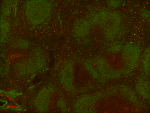
Fresh, frozen mouse spleen was stained with purified Podopla... 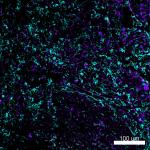
Mice were injected subcutaneously with sheep red blood cells... -
Alexa Fluor® 488 anti-mouse Podoplanin
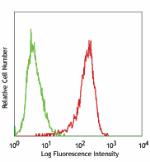
TE-71 mouse thymic epithelial stromal cell line stained with... -
PE anti-mouse Podoplanin
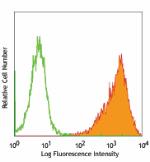
TE-71, mouse thymic epithelial stromal cell line, stained wi... -
APC anti-mouse Podoplanin

Mouse thymic epithelial stromal cell line TE-71 stained with... -
PE/Cyanine7 anti-mouse Podoplanin
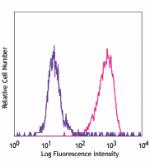
Mouse thymic epithelial stromal cell line TE-71 stained with... -
Alexa Fluor® 594 anti-mouse Podoplanin
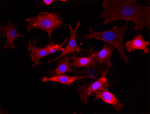
TE-71 mouse thymic epithelial stromal cell line cells were f... 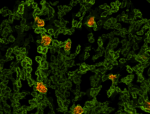
C57BL/6 mouse frozen kidney section was fixed with 4% parafo... -
FITC anti-mouse Podoplanin
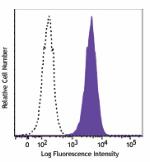
Mouse thymic epithelial stromal cell line TE-71 stained with... -
APC/Cyanine7 anti-mouse Podoplanin
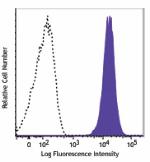
Mouse thymic epithelial stromal cell line TE-71 stained with... -
PE/Dazzle™ 594 anti-mouse Podoplanin
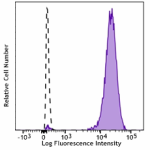
Mouse thymic epithelial stromal cell line TE-71 stained with... -
PerCP/Cyanine5.5 anti-mouse Podoplanin
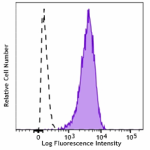
Mouse thymic epithelial stromal cell line TE-71 stained with... -
Brilliant Violet 421™ anti-mouse Podoplanin

Mouse thymic epithelial stromal cell line TE-71 stained with... -
TotalSeq™-A1035 anti-mouse Podoplanin
-
APC/Fire™ 750 anti-mouse Podoplanin
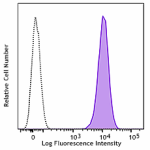
Mouse thymic epithelial stromal cell line TE-71 was stained ... -
TotalSeq™-C1035 anti-mouse Podoplanin
-
TotalSeq™-B1035 anti-mouse Podoplanin


 Login / Register
Login / Register 










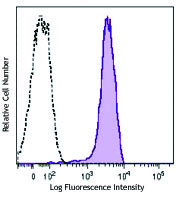
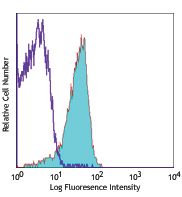







Follow Us